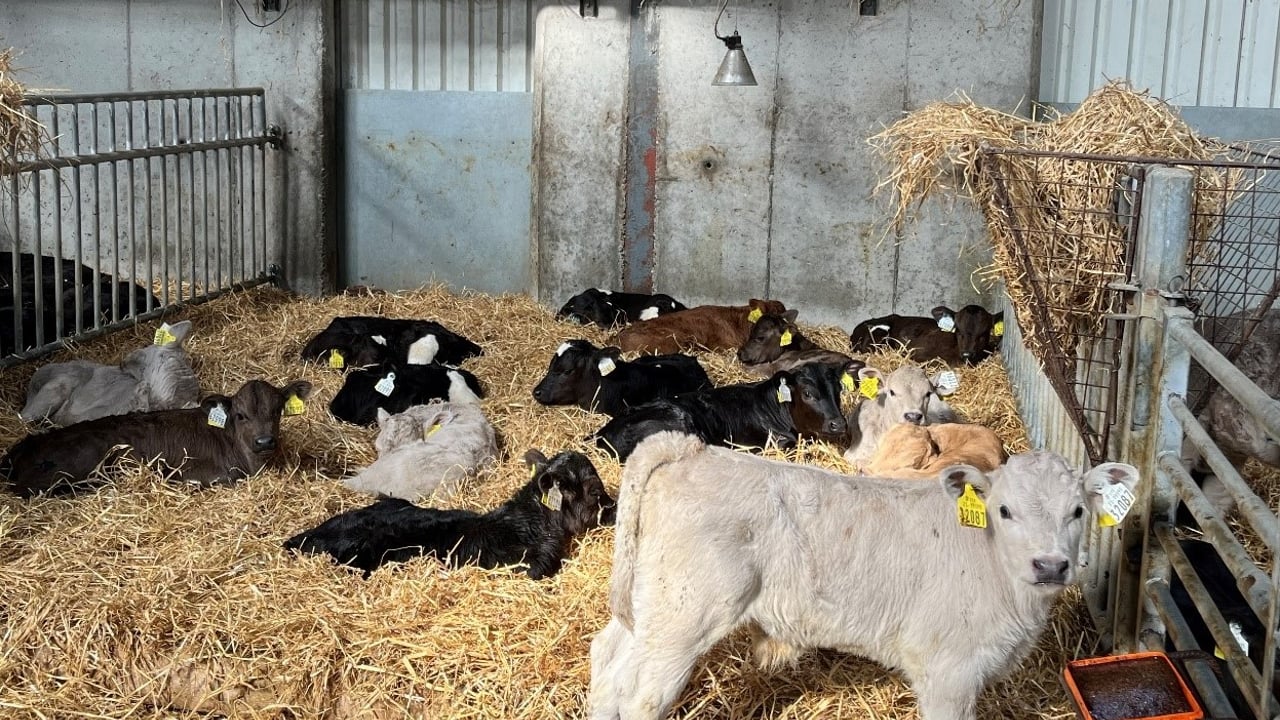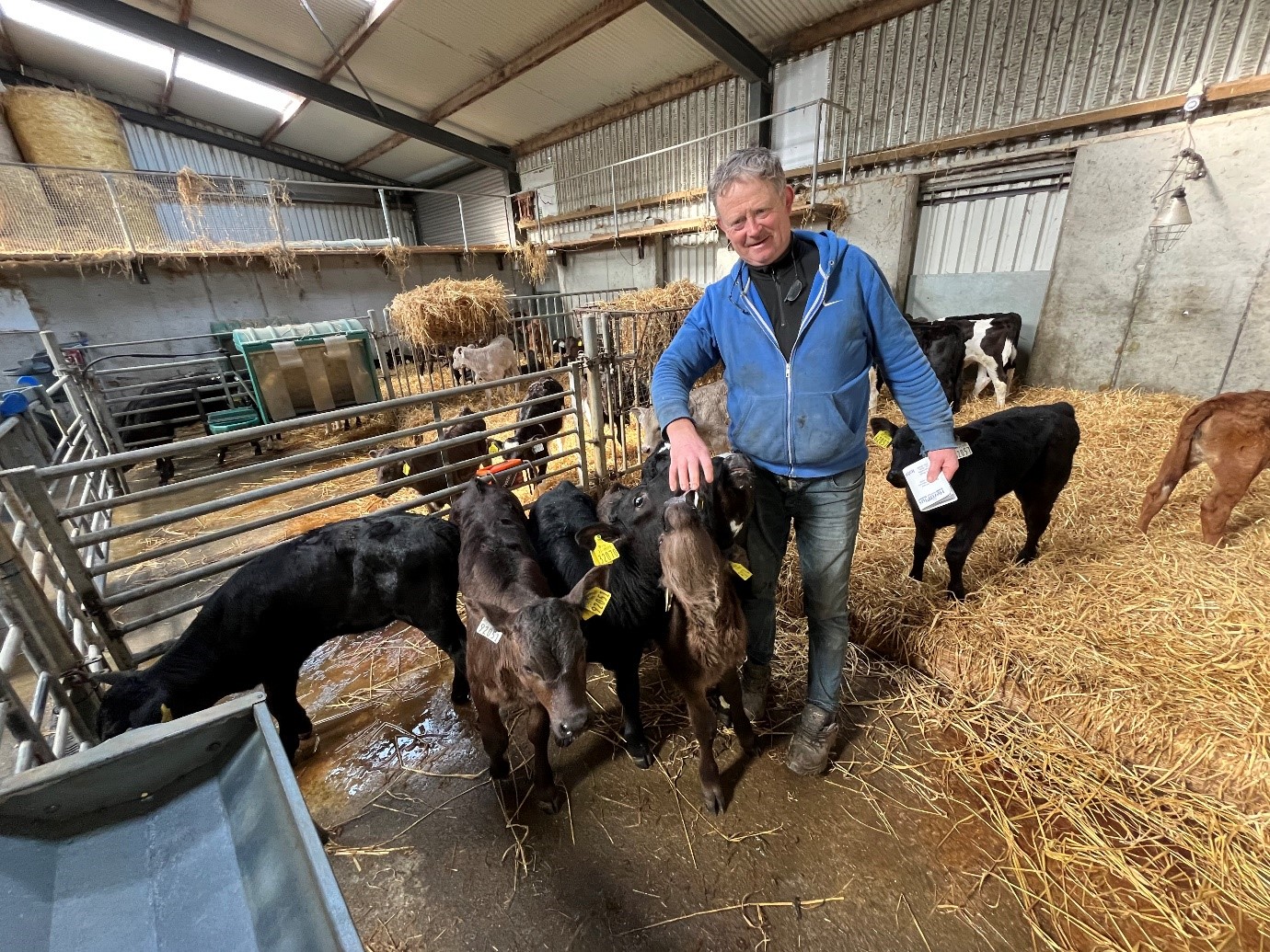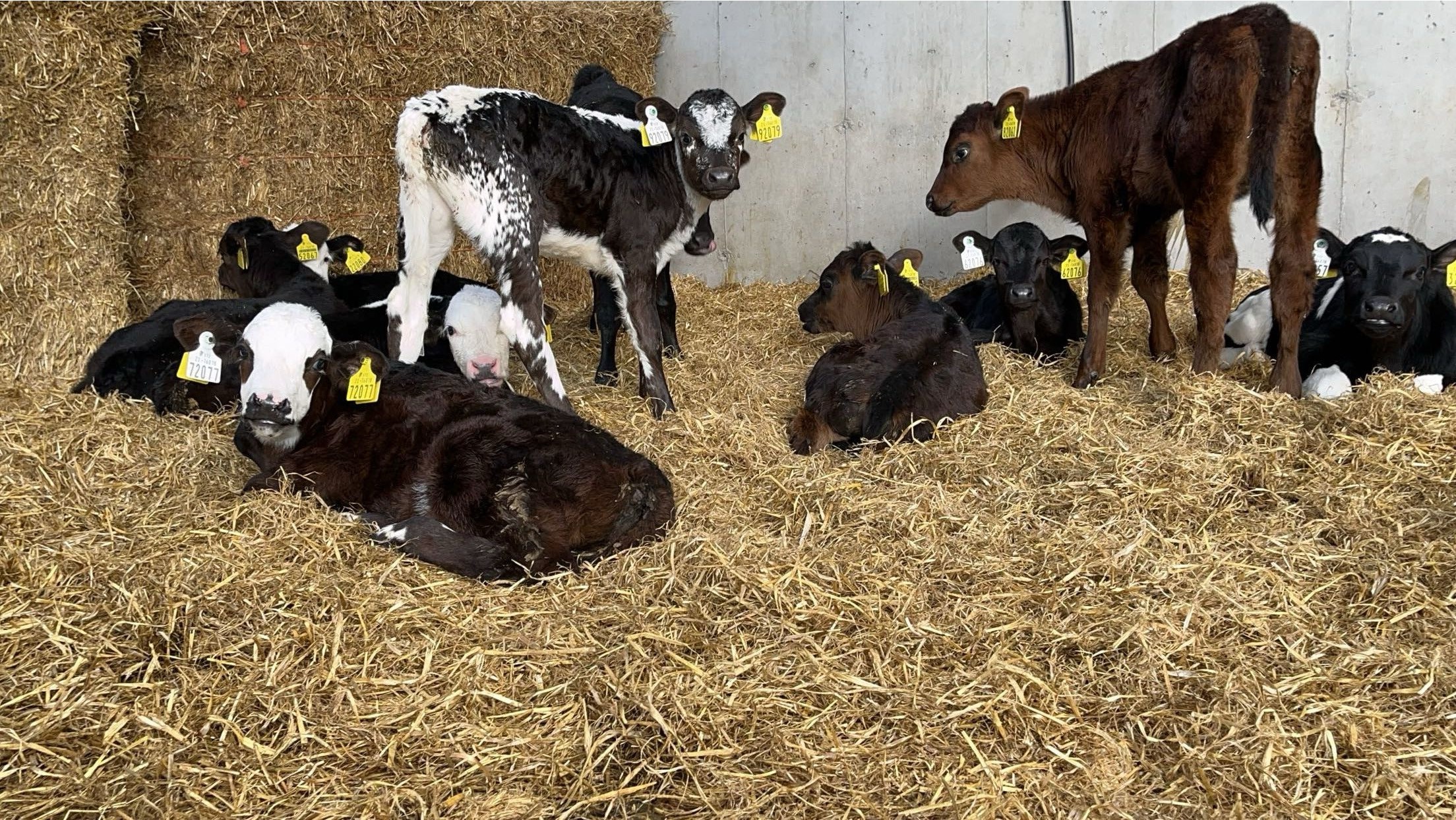Dairy Beef Index Series


Spring Calf Series: Crossbred herds breeding higher CBV calves
The Agriland Spring Calf Series is in association with Teagasc DairyBeef 500
With a growing focus on calf quality and the genetic beef potential of a calf in dairy-beef systems, dairy farmers are looking to produce calves with a higher Commercial Beef Value (CBV).
Teagasc DairyBeef500 programme advisors Alan Dillon and Tommy Cox recently caught up with two dairy farmers in counties Kerry and Galway to hear how they are improving the CBV of their dairy-beef calves bred from their crossbred herds.
The two farmers are:
- William Dennehy, Killarney, Co. Kerry;
- David and Robert Gannon, Kilconieron, Co. Galway.
William Dennehy farms near Currow outside Killarney, Co. Kerry and milks between 100-110 cows on his milking platform.
A large number of cows in the herd would be crossbred in nature with 20-30% Jersey genetics in a large number of the cows.
Artificial Insemination (AI) is used on the majority of the herd with an Angus stock bull in place also.
William sells all calves in the local marts and wanted to try to increase the beef value of his calves to entice more customers.

Given the herd is cross-bred in nature, research is needed to ensure the calves produced will be of a high enough CBV to attract repeat customers.
William sat down in 2024 and put a plan in place to use some of the best beef genetics available through AI.
A range of breeds were decided on including Charolais, Limousin, Angus and Hereford.
William feels these will get him the best prices for his calves as they are the breeds demanded locally and in the export trade.
The bulls selected by William for 2024 included the following:
| Breed | Ai Code | DBI € | Beef sub-Index € | Carcase value (kg) | Calving difficulty (%) | Gestation length (days) |
|---|---|---|---|---|---|---|
| Charlaois | CH4321 | €139 | €194 | 43kg | 5.6% | 2.08 days |
| Angus (2nd calvers) | AA6682 | €148 | €99 | 11.5kg | 3.1% | -2.4 days |
| Hereford | HE6841 | €131 | €108 | 8.7kg | 3.1% | +0.7 days |
| Angus (Heifers) | AA4089 | €174 | €104 | 9.7kg | 2.5% | -3.6 days |
| Limousin | LM9379 | €170 | €195 | 33.2kg | 5.43% | -0.21 days |
According to William he was extremely impressed with some of the continental bulls used.
He said: "I found no issue with calving difficulty or gestation length.
"I found the Charolais and Limousin especially to be spot on in terms of gestation length and calving ease.
"I only had to assist one Angus calf out of a heifer this year and the claves definitely do look to be of a better quality.”
While it may be easy to sell calves this year and the actual net effect of using better-quality bulls is hard to quantify when beef prices have risen, it is in years where the calf trade may not be as favourable where the changes William has made will be of benefit. Even in bad years for the calf trade, good calves have always found a home easily.
As a result of his success, William has picked a similar team of bulls again this year with continental bulls such as CH4321 and some early-maturing Angus and Hereford bulls used again on his herd.
The changes made on this farm shows calf quality can be improved in every herd and can leave a higher margin for dairy farmers who make the effort to select good quality sires.
As part of last year’s beef-breeding series, the Teagasc DairyBeef500 team took a visit to the farm of David and Robert Gannon in Kilconieron Co. Galway to assist in beef bull section for their dairy herd.
The farm consists of 170 predominately cross-bred type cows on on a 55Ha grazing platform. Given the cow type and the fact the herd sits at the lower end of national average in terms of the beef merit, a team of high DBI and - more importantly a team of high beef sub index bulls within the DBI - were used in a bid to produce higher beef-merit calves.
The fact the farm uses close to 100% AI gave great flexibility to select a range of sires.
It was decided to split the beef bull teams into three periods over the breeding season:
- A team of bulls for the first four weeks;
- A team of bulls for the main calving period;
- A team of shorter gestation bulls for the latter end of the breeding season.
Some of the bulls featured in more than one team. In total five different Angus Bulls, two separate Belgian Blue bulls and one Limousin bull (LM 2014) were used along with two Angus stock bulls to mop up the heifers.
The team of bulls selected had a calving difficulty ranging from 2.6-5.6% which allowed David to pick suitable bulls to match the cow depending on her age and size.
Longer-gestation bulls were used in the first three weeks of the breeding season and shorter-gestation bulls toward the end to keep calving tight.
The criteria that the bull needed to get on the team for the cows was:
- A calving difficulty of less than 6%;
- Gestation length of less than 3 days;
- A beef sub index of no less than €100;
- A carcass weight of greater than 12 kg.
With calving now almost fully completed, the Teagasc DairyBeef500 team caught up again with David to see how calving went, what the demand for calves was like and what changes he is going to make when selecting bulls for the year ahead.
Overall David was happy with the bulls selected for the farm with no major issues or difficult calving’s been reported.
Angus calves in general worked well with no degree of difficulty and the demand for them was high.
One bull David found to have increased gestation was AA4638 which did lead to slightly bigger calves which did require slight assistance in some cases but on the other hand, some of the calves on the ground after this bull were exceptional.

Overall David was extremely pleased with the Belgian Blue and Limousin bulls used on the farm in terms of calving difficulty and gestation but one comment he did make was he felt there was a bigger demand for the Belgian Blue calves in comparison to their Limousin comrades which were of equally good quality.
The only real problem encountered at calving was with one of the stock bulls used on the heifers did produce some big calves which did result in a degree of difficulty in some cases, this year the plan for the farm is use 100% AI and for heifers served using beef straws using highly reliable bulls.
By being more selective when choosing their beef bulls, the average CBV of this year’s calf crop is expected to be close to four star on average which is a very high average but overall David feels the quality of the calves on the ground are superior to previous years.